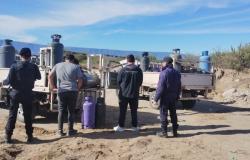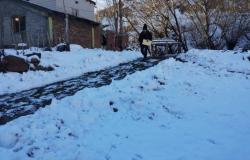He climate change It is a reality and it is increasingly worrying. Last month we knew, thanks to a study, that 2023 was the hottest summer in two thousand years. More than 3,000 people died from causes directly related to the heat. And this year it will be no less: according to the latest Copernicus reportthe European Union’s climate monitoring program, the summer of 2024 in the northern hemisphere will be “hellish.”
For this reason, the Spanish Ministry of Health has launched a campaign with the purpose of informing and raising awareness among citizens about the problems that heat poses for health. But not only that. These warnings were recently joined by the American Space Agency (NASA), which ensures that “By the year 2050, some portions of our planet could become uninhabitable”.
Taking as reference data collected from satellites, the POTdesigned a map with a range of three to five decades in which some regions will no longer have adequate conditions for the development of human life.
The main cause of this, they explain, would be directly related to global warming, which is causing an increase in the frequency and severity of the presence of heat waves on a planetary level.
Wet bulb
To do this, the scientists used the wet bulb index, which combines air temperature and humidity to determine the thermal stress a person can tolerate. This thermal stress evaluates the ability of the human body to dissipate heat through sweating.
Researchers have concluded that the highest wet bulb temperature that humans can survive are the 35 degrees Celsius for six hours straight. From that figure, it is impossible to regulate body temperature.
uninhabitable places
Among the territories that could be most affected by the rise in wet bulb temperature are:
- South Asia, the Persian Gulf and the Red Sea towards the year 2050, which would make it impossible in cities such as Kuwait City, Dubai or Baghdad to carry out outdoor tasks outside of nighttime hours.
- Eastern China, parts of Southeast Asia and Brazil around the year 2070.
In addition to these, some areas of the United States such as Arkansas, Missouri and Iowa will probably reach the critical wet bulb temperature limit.






